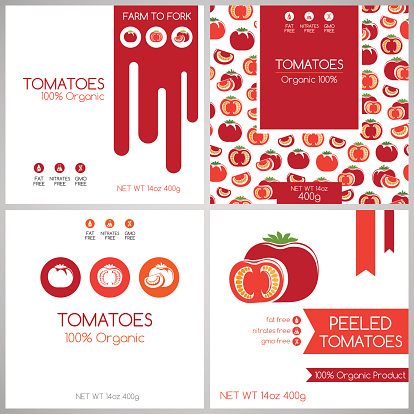You may think of food packaging as a relatively modern invention but in fact the idea of packaging as a way of protecting and transporting food goes back many thousands of years.
In more primitive times, if food was not consumed immediately, it would need to be kept safe from predators or thieves and foodstuffs would have been carried and kept in gourds and sea shells, even in animal skins or leaves. Pottery, cloth and wooden containers would come later, particularly when the advent of trading further afield necessitated sturdier and safer methods of transportation. A tea trader called John Hornimann in 1826 realised that, as tea was then sold loose, more unscrupulous traders would mix their tea with things like plant cuttings in order to make more money, so he came up with the idea of selling tea in sealed packets, as it still is today.
Types of Packaging
There are four basic types of packaging materials – metal, glass, plastic and organic matter (usually paper and wood). Most packaging as we know it today is a combination of materials, for example, a glass jar will often have a plastic lid with paper labelling, or a drinks carton will be made from plastic and paper and laminated in plastic.
The development of the carton as we recognise it was accidental. During the 1870s Robert Gair of Brooklyn, USA, was a printer and producer of paper bags. In the process of printing seed bags, a metal rule which was used to crease the bags shifted out of position and cut the bag. Gair had produced the first carton by cutting and creasing the paperboard material at the same time.
Paper is probably the oldest type of packaging. The Chinese used sheets of bark from the mulberry tree to wrap food, in around the first or second century B.C. Indeed, it was the Chinese who invented cardboard in the seventeenth century. This form of paper making technology spread to the Middle East, then Europe and it appeared in the UK in 1310. The techniques were refined and improved along the way.
The first commercial cardboard box appeared in 1817 in England, followed by corrugated paper in the 1850s and by the end of the nineteenth century this began to replace wooden crates for shipping and transportation purposes.
Glass has been made since 7000 B.C. and over the centuries has continued to be produced using roughly the same base materials – sand and silica, among others – while the technique has been refined and industrialised. Going into the 1700s it became possible to produce decorated and shaped glass and the maker’s name and product name could be moulded into the container. At this stage glass was an expensive commodity, but with the invention of the automated bottle-making machinery, the price of glass containers began to come down. However, today, because other types of packaging like plastic and paper has become comparatively cheap – including for custom pouches for food products – glass is often reserved for more high-value products like perfumes, wine and specialist beers.
Metal, in the form of tin, has been used for general packaging in Europe since the 14th century and in the UK from the 1700s, However, at that time it was considered too dangerous for food packaging. But the first instances of safe metal packaging came in nineteenth century France when it was discovered that food sealed in tin containers and sterilised by boiling would be preserved for up to a year.
Modern packaging has come a long way, not only protecting against spillage and damage it also allows food producers to communicate with consumers by giving information about nutritional values and safety.
Article supplied by Mercury Packaging, providing high quality flexible solutions to the food and drink industry.


